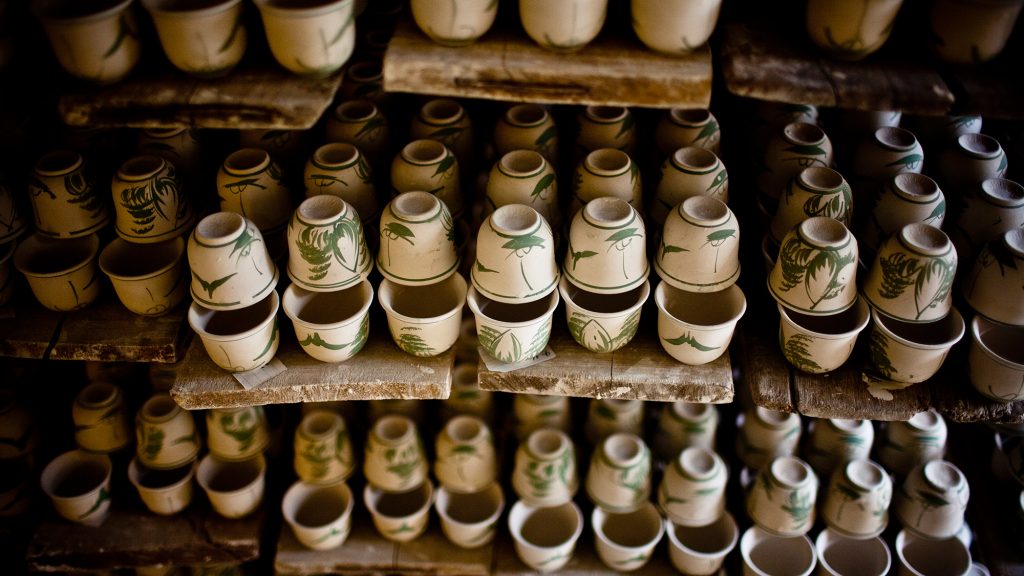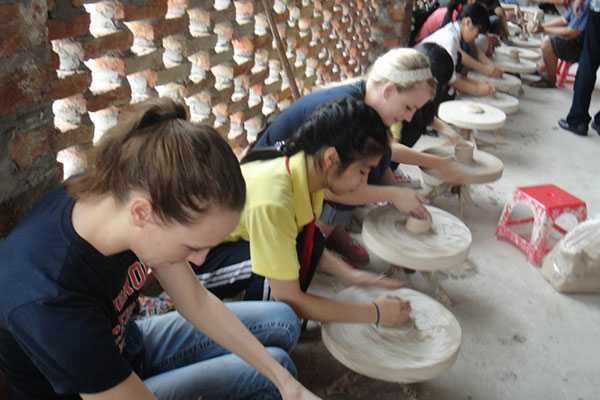News
Bat Trang Village – Discovering Vietnam’s Timeless Ceramic Artistry and Cultural Heritage
Bat Trang village is a historic ceramics village in Vietnam, renowned for its exquisite pottery and rich cultural heritage. Nestled near Hanoi, this village has been a vibrant center for ceramic production for over 700 years. Visiting or using products from Bat Trang village offers insights into traditional craftsmanship, artistic creativity, and the enduring spirit of Vietnamese artisans.
Whether you want to decorate your home with authentic ceramic art, learn about traditional pottery techniques, or compare modern ceramics with those crafted in Bat Trang village, this comprehensive guide will take you through everything you need to know. Additionally, advice on how best to experience Bat Trang village—either as a visitor or a consumer—is included to help you appreciate this unique craft community.
History and Origins of Bat Trang Village

Before diving deeper into the artistry, it’s essential to understand Bat Trang village’s fascinating background, which shaped its identity as a hub of ceramic excellence.
The Birth of a Ceramic Hub
Bat Trang village’s origins date back to the 14th century during the Ly Dynasty. Its residents found that the local white clay was ideal for making durable ceramics, leading to the first workshops. Over centuries, Bat Trang evolved from small-scale pottery makers into organized guilds preserving specialized techniques passed down through generations.
This historical foundation is not just about crafting pots but about creating a legacy of Vietnamese culture embedded in daily objects. The villagers’ dedication to maintaining quality and authenticity has made Bat Trang prized domestically and internationally.
Influences Through Time
Throughout its history, Bat Trang ceramics absorbed influences from neighboring cultures and trading partners. Chinese ceramics introduced glazing methods, while French colonial times brought new stylistic elements and market expansion. Despite these external inputs, Bat Trang kept its distinct style rooted in Vietnamese aesthetics.
These layered influences make Bat Trang village a living museum where one can witness the evolution of ceramic art responding to political, social, and economic changes.
Preserving Tradition in Modern Times
Today, Bat Trang is a testament to resilience amid modernization. While some villages worldwide have lost artisanal traditions to industrialization, Bat Trang thrives by blending tradition with innovation. Local families continue handcrafting ceramics alongside contemporary designers who infuse fresh ideas, ensuring timeless appeal and commercial viability.
The government and cultural organizations also support Bat Trang through festivals, exhibitions, and tourism development, recognizing its importance as a cultural treasure.
The Unique Artistic Elements of Bat Trang Ceramics

When discussing Bat Trang village, the artistic qualities of its pottery deserve special focus, highlighting what makes these creations stand out globally.
Signature Materials and Techniques
One hallmark of Bat Trang ceramics is the use of locally sourced white clay, known for its fine texture and strength. Potters skillfully shape the clay on spinning wheels before firing it at high temperatures in wood-fired kilns.
Glazing techniques vary from simple transparent glazes enhancing the natural beauty of the clay to intricate painted designs depicting flora, fauna, and folklore scenes. These methods create ceramics that are durable, aesthetically pleasing, and functional.
Iconic Designs and Motifs
Bat Trang pottery features motifs reflective of Vietnamese culture and nature—lotus flowers symbolizing purity, dragons signifying power, and fish representing prosperity are common themes. These designs are often hand-painted with cobalt blue or multi-colored enamels.
Beyond traditional symbols, modern artisans incorporate abstract patterns and minimalist styles to attract contemporary buyers, showing the village’s adaptability without losing identity.
Functional and Decorative Uses
Products range from everyday household items like bowls, plates, and teapots to decorative vases and sculptures. The combination of practicality and artistry means Bat Trang ceramics fit seamlessly into both utilitarian and aesthetic contexts.
Collectors value antique pieces for their historical significance, while tourists enjoy buying souvenirs that represent authentic Vietnamese craftmanship.
Experiencing Bat Trang Village as a Visitor

Exploring Bat Trang village is more than shopping for ceramics; it’s an immersive cultural journey. Here’s how visitors can get the most out of their experience.
Touring Workshops and Demonstrations
Many workshops open their doors to guests, allowing firsthand observation of pottery-making processes—from shaping clay to painting and firing. Visitors may even participate in hands-on classes, trying their hand at molding or decorating ceramics.
Such interactive experiences deepen appreciation for the skill involved and foster personal connections with local artisans.
Exploring the Village Market
The bustling Bat Trang market offers a vast array of ceramics at various price points. Negotiating prices and discovering unique finds make shopping here exciting. Buyers should look for certificates of authenticity when purchasing rare or valuable items.
Besides ceramics, visitors can sample local cuisine and buy traditional crafts, making the market a vibrant cultural hotspot.
Attending Festivals and Cultural Events
Annual festivals celebrating Bat Trang ceramics showcase exhibitions, cultural performances, and contests for potters. These events provide insight into the village’s communal spirit and highlight emerging talents.
Timing visits around such occasions enriches the travel experience, offering opportunities to engage with the community beyond commerce.
Comparing Bat Trang Ceramics with Other Global Traditions
Understanding how Bat Trang ceramics contrast and align with other global pottery traditions offers intriguing perspectives on cultural identity and artistic expression.
Distinctive Features Compared to Chinese and Japanese Ceramics
While Chinese porcelain is famous for its delicate translucency and precise brushwork, Bat Trang ceramics emphasize earthy textures and bold, symbolic motifs. Japanese pottery often focuses on wabi-sabi aesthetics valuing imperfection, whereas Bat Trang celebrates detailed, colorful decorations.
These differences reveal how regional materials, philosophies, and histories shape ceramic art uniquely.
Bat Trang versus European Ceramic Styles
European ceramics, especially from places like Delft or Meissen, tend toward intricate figurines and formal styles inspired by baroque or rococo art. In contrast, Bat Trang pottery prioritizes functional forms intertwined with indigenous symbolism.
Consumers drawn to Bat Trang often appreciate a blend of practical use with cultural storytelling absent in many Western ceramics.
The Global Appeal of Bat Trang Ceramics
Despite strong local roots, Bat Trang pottery enjoys international popularity due to its distinctive style and quality. Global collectors prize the handcrafted nature and vibrant designs, providing economic incentives to preserve traditional methods.
This international recognition situates Bat Trang village as a crucial player in global artisanal markets.
Practical Advice for Using and Buying Bat Trang Ceramics
To fully enjoy Bat Trang pottery, whether as decorative art or everyday ware, some tips ensure longevity and satisfaction.
How to Care for Bat Trang Ceramics
Most Bat Trang ceramics are glazed and fired to withstand regular use. However, avoid extreme temperature changes to prevent cracking. Hand washing with mild detergent is recommended instead of harsh dishwasher cycles.
Proper storage in padded environments prevents chipping, especially for delicate or antique items.
Choosing Authentic and Quality Pieces
With growing demand, replicas and low-quality imitations exist. Buyers should seek shops with reputable certifications or directly purchase from established workshops in Bat Trang village.
Examining symmetry, glaze consistency, and clarity of painted details helps identify genuine craftsmanship.
Incorporating Bat Trang Ceramics into Home Decor
Bat Trang pottery complements a variety of interior styles, from rustic to modern minimalist. Use large vases as centerpiece art, display colorful plates on walls, or serve tea with handmade sets to add elegance and cultural depth.
Mixing older and newer pieces creates dynamic displays reflecting both tradition and contemporary trends.
Conclusion
Bat Trang village stands as a vibrant beacon of Vietnam’s rich ceramic heritage, combining centuries-old craftsmanship with evolving artistic expressions. Its unique materials, iconic designs, and practical yet beautiful products offer something truly special in today’s mass-produced world. Whether visiting the village, purchasing authentic pottery, or comparing it to global ceramic traditions, Bat Trang ceramics provide profound cultural insights and aesthetic pleasure. Embracing Bat Trang village’s artistry allows us to connect with Vietnamese history, support sustainable craft communities, and enrich our personal environments with timeless beauty.
